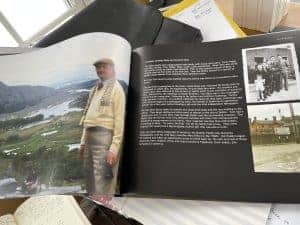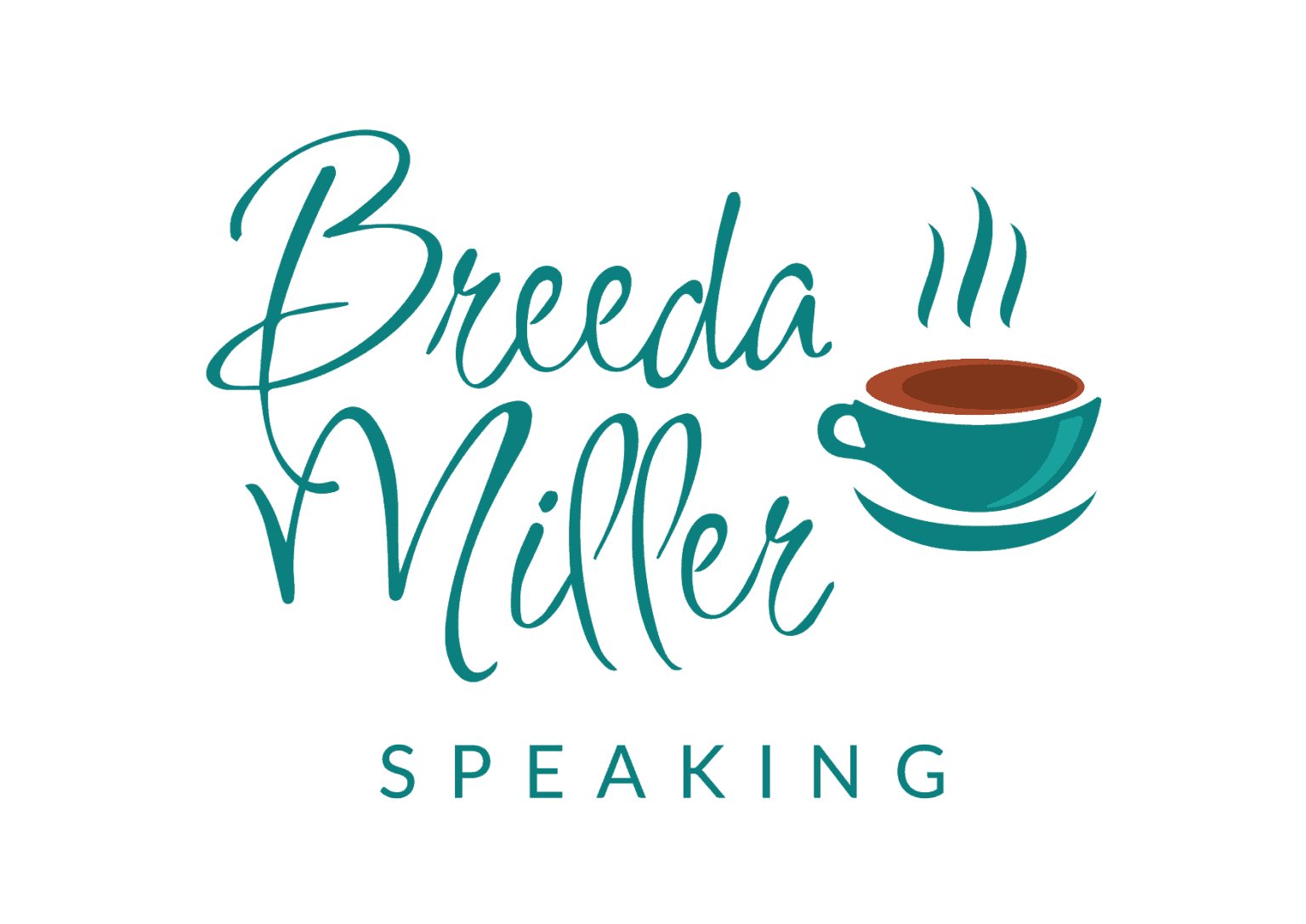The plastic tubs of photos were taunting me. They were everywhere and filled to the brim. Then there were the old photo albums with plastic sleeves holding white-bordered photos yellowing with age. Shoe boxes filled with important family documents, marriage license, baptismal certificates, dog pedigrees. Lifetimes shoved into storage containers with no regard for their precious contents. This was my world for too many years. As the only daughter with four brothers, I was the default keeper of the family photos and records. It was an honor, a burden, and a worry. I felt guilty that I had been entrusted with all these photos and documents and didn’t know where to begin and how to preserve them. I was caring for my mother at the end of her life and spending many hours sitting with her as she lay quietly in her bed, unable to do much of anything. The best I could do was keep her company.
Telling their story
Then I had an idea. What if I started to tell her story through all the photos and then I could focus my mind and my heart on her vibrant past rather than her present state? I also felt that I had a responsibility to honor my parents. How would I ever sort and divide up these photos and documents with my four brothers? I was never much for scrapbooking and then I would only have one copy anyway. Then it hit me. I could create a digital book and be able to share it with my brothers and we could all have access to these precious memories. The other point is that mom lived with us for many years and I knew stories about our family that my brothers had never heard. This would be a place to keep it all together and have a legacy to pass on to our children.
A massive task
But it seemed overwhelming. All those photos, where to begin? How do I do this? I am not a genealogist and just had my memory to go on. Fortunately my mom’s sister, Auntie Betty was available and willing to help me ID mystery photos. Many had names and dates written on the back, so that was very helpful. My mom had vascular dementia at this point so she was not a reliable source, but she was delighted to look at the photos with me. I will share with you my process and what I learned. This is how I created my family legacy, it is certainly not the only way to do it and it might not work for your family. My hope is that it will inspire you to figure out your own way to honor your history. One of the important lessons I learned was to keep it real and fill in juicy details wherever possible. Lists of family names and dates are good, but when you add in bits of their personality or funny stories it becomes something truly extraordinary. I am now in the process of helping my husband’s family create their family legacy, so I know how hard this can be. Keep at it, it’s worth it. I think this book is the most precious thing in our home. Here’s how you can do it too.
The Process
Step 1. Find a digital platform. I used Blurb.com, because my brother David, who was a professional photographer recommended them. What I liked about Blurb was that it was flexible enough to make it the way I wanted it and structured enough that I couldn’t ruin the design. It costs nothing until you purchase the printed book. It’s on-demand printing and you can order as many or as few as you want. Another important point is that you don’t have to decide in advance how many pages you will have. I had no idea how big this was going to get and it was never a problem. I chose the largest format and the template I chose was very simple – black pages that looked like an old-fashioned photo album. Choose the digital book company, the size of the book, and the design template. If you’re collaborating with other family members, you can add them to Blurb. By the way, I am not affiliated with Blurb.com in any way.
Step 2. Think about your family story. What is the story you want to tell? It’s more than just a collection of photos, it’s a journey. Here’s how I organized my ideas before I touched a single photo. If you have a road map in mind, it helps when you start sorting pictures and going through all the documents. If there are some very special and memorable photos that you are sure you want to include you can look at them first and that may help chart your course. Create an outline. Think of it as chapters in the book and when you start selecting the photos it will help you decide which ones to use and where to place them. You will not be able to use every photo. You have to choose only the very best representatives of an era, an event or a person. This is really hard, but each page will usually have only 2 or 3 photos. Some will have a collection of 6 or 9, some may have only one. You have to be ruthless as you select the photos. Having an outline for your family story will help.
Here is mine for example:
The Kelly Family – my father’s family in Dublin, Ireland. Family photos of him, his siblings and parents. PHotos of their homes and several written narratives about where they grew up and what life was like. Photos of them as adults, mass cards with parent’s death information, photos of graves. Funny stories about my dad as a young boy. Names of his siblings, their spouses and their children.
The Byrne Family – same treatment for my mom’s family. Anything to tell their story before they became a couple. Photos were very limited as my parents emigrated from Ireland and didn’t bring much with them. Most of the photos were in very bad shape and very small. Having them repaired and touched up digitally was well worth the time and effort. If you have some of these rare photos I highly recommend you do this. Notes with my parents handwriting are really special.
The young couple – my parents as a young couple. Engagement photos, good times, wedding photos, marriage license, travel, their first home
The new family – my brothers in Ireland. Their school photos, their sports, pets. My dad’s decision to emigrate.
Welcome to Detroit – the story of why and how my family ended up in Detroit, as they knew no one in America and my Dad had to travel via Canada.
Family and Friends – miscellaneous family photos of friends and special occasions
Family Quotes – a page of the things my mom and dad used to say all the time
Sibling Pages – Each sibling received the same number of pages for their baby pics, childhood, weddings and their children.
Final farewell – pages with photos from each parent’s memorial service and a favorite poem.
For my husband’s family, we will focus on their travels and there will be a few pages dedicated to special family recipes, along with a few photos of mom and dad with the food. Every family has its own story. I included funny stories and some less than perfect moments. However, I did not include anything that would shame anyone or be critical or mean.
Step 3
Sort the photos and documents. Now that you have an outline and an idea of the stories you want to tell, this will help you choose the best photos to illustrate those stories or eras. You can’t use everything, so creating this outline will help you pare things down right from the start. As you go through the photos you will certainly come across other photos or stories you had forgotten. No worries. This is your book, you can do whatever you like and you don’t have to worry about word counts or pages.

Step 4
Scan the photos and documents. There are a number of reputable companies that specialize in scanning old photos. Only send the ones that you will likely use (not the entire bin). I can’t recommend a service, because my brother (the photographer) ended up scanning and repairing ours. Of course, this was after I went to CVS and tried to do it myself with less than stellar results. This is hard because you have to send away your one of a kind precious family photos, so this is not the time to look for a bargain. Safety and assurances are critical.

Step 5
Start building the book. Take it one chapter at a time. You may do it chronologically or some other way. Not every photo will deserve a narrative or a story. Always identify who is in the photo and any interesting details, where it was taken, when and if anything special happened. Ask your relatives to confirm details or names. If your siblings have different versions of the same story, it might be fun to include all of them. Same story, different points of view.

There is no deadline for this. It took me over a year to complete my book and I re-did it three times. The great thing about a digital book is that you can share it with family members who might want to read it, but don’t want to own it. My cousins in Ireland were able to see the book and enjoy the stories. They told me they learned so much about our family and were so delighted to see it all together. I bought copies of the book for my nieces and nephews as wedding gifts. Best of all, my Auntie Betty who is now 92 years of age treasures her copy and keeps it on her coffee table so she can easily turn the pages and step back in time. It is a gift you will never regret creating.
